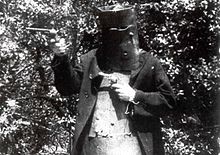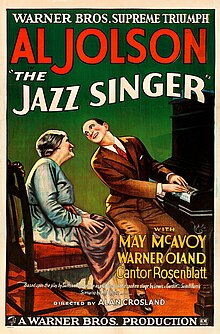History

The term feature film came into use to refer to the main film presented in a cinema and the one which was promoted or advertised. The term was used to distinguish the longer film from the short films (referred to as shorts) typically presented before the main film, such as newsreels, serials, animated cartoons, live-action comedies and documentaries. There was no sudden increase in the running times of films to the present-day definitions of feature-length; the "featured" film on a film program in the early 1910s gradually expanded from two to three to four reels. Early features had been produced in the United States and France, but were released in individual (short film) scenes. This left exhibitors the option of playing them alone, to view an incomplete combination of some films, or to run them all together as a short film series.
Early features were mostly documentary-style films of noteworthy events. Some of the earliest feature-length productions were films of boxing matches, such as The Corbett-Fitzsimmons Fight (1897), [9] Reproduction of the Corbett-Jeffries Fight and The Jeffries-Sharkey Fight (1899). Some consider the 100-minute The Corbett-Fitzsimmons Fight to be the first documentary feature film, but it is more accurately characterized as a sports program as it included the full unedited boxing match. In 1900, the documentary film Army Life was produced by Robert Paul. It was a programme of 33 short films, with a total running time of around 75 minutes, following the training of British soldiers. [10] Inauguration of the Australian Commonwealth (1901) ran for 35 minutes, "six times longer than any previous Australian film", [11] and has been called "possibly the first feature-length documentary made in Australia". [12] American company S. Lubin released a Passion Play titled Lubin's Passion Play in January 1903 in 31 parts, totaling about 60 minutes. [13] The French company Pathé Frères released a different Passion Play in May 1903, The Life and Passion of Jesus Christ , in 32 parts, totaling 44 minutes.
Defined by length, the first dramatic feature film was the Australian 70-minute film The Story of the Kelly Gang (1906). [14] Similarly, the first European feature was the 90-minute film L'Enfant prodigue (France, 1907), although that was an unmodified record of a stage play; Europe's first feature adapted directly for the screen, Les Misérables [ better source needed ], came from France in 1909. [14] The first Russian feature was Defence of Sevastopol in 1911. [15] Early Italian features included L'Inferno (1911), Quo Vadis? , The Last Days of Pompeii (1913) and Cabiria (1914). The first UK features were the documentary With Our King and Queen Through India (1912), filmed in Kinemacolor [16] and Oliver Twist (also 1912). [14] The first American features were Oliver Twist , From the Manger to the Cross , Cleopatra and Richard III (all 1912). Actor Frederick Warde starred in some of these adaptations. [17] The first Asian feature was Japan's The Life Story of Tasuke Shiobara (1912), [18] the first Indian feature was Raja Harishchandra (1913), [19] China's first feature film was Zhang Shichuan's Nan Fu Nan Qi (1913), the first South American feature was Brazil's O Crime dos Banhados (1913), [18] and the first African feature was South Africa's De Voortrekkers (1916). [18]
By 1915, over 600 feature films were produced annually in the United States. [20] It is often incorrectly cited that The Birth of a Nation (1915) was the first American feature film. [21] The most prolific year of U.S. feature production was 1921, with 682 releases; the lowest number of releases was in 1963, with 213. [20] Between 1922 and 1970, the U.S. and Japan alternated as leaders in the quantity of feature film production. Since 1971, the country with the highest feature output has been India, [22] which produces a thousand films in more than twelve Indian languages each year. [23]
